The annual survey report found that:
1) Half of organizations surveyed have a formal recruiting strategy, and the main objective is attracting key staff.
2) While recruitment intentions decreased overall last year, 84% of organizations still experienced recruiting difficulties, mainly due to a lack of specialist skills.
3) Common initiatives to overcome difficulties include appointing underqualified candidates with potential and providing additional training.
4) Most organizations use recruitment agencies, mainly for temporary and permanent hiring. Cutting costs and direct hiring are reasons for reducing agency use.




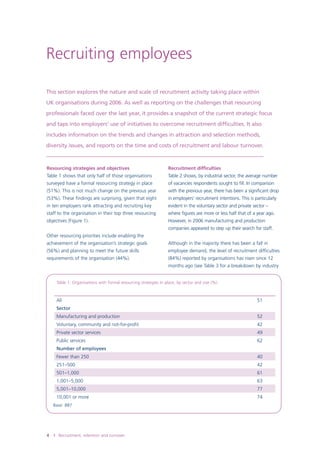
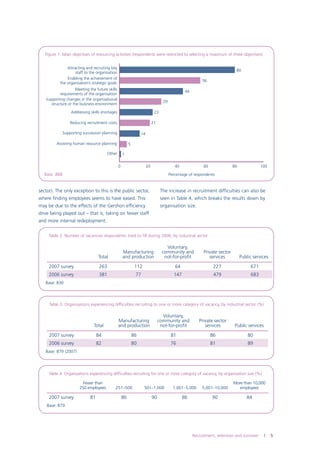














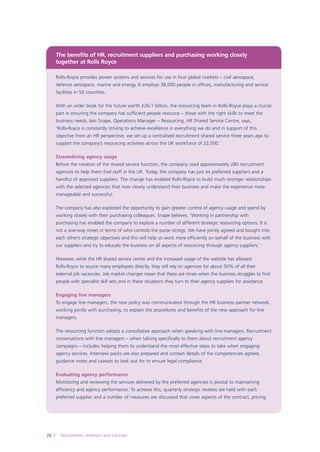










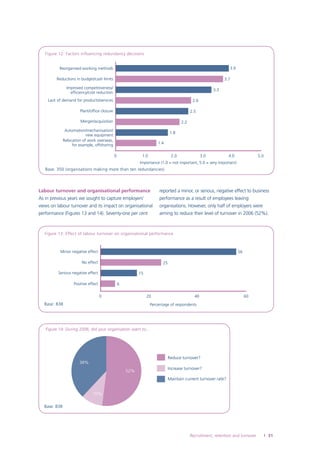

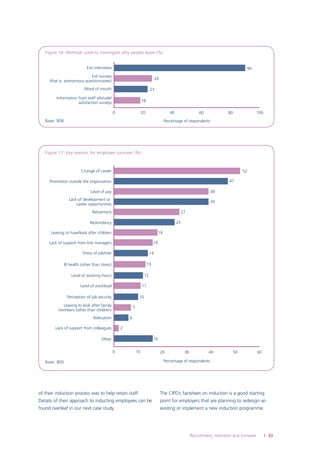


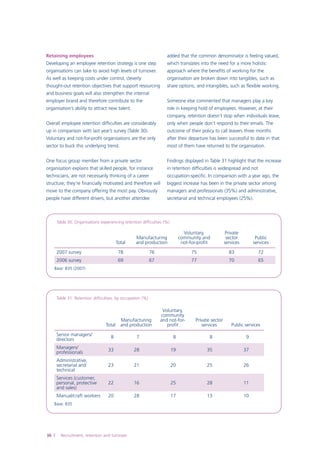






![Further reading
CIPD. (2007) Diversity in business: a focus for progress.
CIPD. (2006) Induction. Factsheet. London: Chartered
Survey report. London: Chartered Institute of Personnel
Institute of Personnel and Development. Available at
and Development. Available at http://www.cipd.co.uk/
http://www.cipd.co.uk/onlineinfodocuments/factsheets.
subjects/dvsequl/general/_dvstybsfcs.htm [Accessed 14
htm [Accessed 14 May 2007].
May 2007].
CIPD. (2006) Labour market outlook: a quarterly report
CIPD. (2007) Employing people with criminal records.
monitoring the state of the UK labour market. London:
Factsheet. London: Chartered Institute of Personnel and
Chartered Institute of Personnel and Development. (4
Development. Available at http://www.cipd.co.uk/
issues) Available at: http://www.cipd.co.uk/
onlineinfodocuments/factsheets.htm [Accessed 14 May
onlineinfodocuments/atozresources.htm [Accessed 14
2007].
May 2007].
CIPD. (2007) Immigration law changes: what employers
All of the above are available for CIPD members to
should know. Factsheet. London: Chartered Institute of
download from the Information Resources section of
Personnel and Development. Available at http://www.
the CIPD website at www.cipd.co.uk
cipd.co.uk/onlineinfodocuments/factsheets.htm
[Accessed 14 May 2007].
Available from the CIPD Bookstore at www.cipd.co.uk/
bookstore:
CIPD. (2006) Diversity in business: how much progress
have employers made? First findings. Survey report.
KEARNS, P., WALTERS, M. and MAYO, A. (2006) What’s
London: Chartered Institute of Personnel and
the future of human capital? Executive briefing. London:
Development. Available at http://www.cipd.co.uk/
Chartered Institute of Personnel and Development.
subjects/dvsequl/general/_dvrstybus.htm?IsSrchRes=1
[Accessed 14 May 2007].
CIPD. (2006) Employee turnover and retention.
Factsheet. London: Chartered Institute of Personnel and
Development. Available at http://www.cipd.co.uk/
onlineinfodocuments/factsheets.htm [Accessed 14 May
2007].
CIPD. (2006) Human capital. Factsheet. London:
Chartered Institute of Personnel and Development.
Available at http://www.cipd.co.uk/
onlineinfodocuments/factsheets.htm [Accessed 14 May
2007].
Recruitment, retention and turnover](https://image.slidesharecdn.com/recruitretntsurv07-131017024007-phpapp01/85/Recruitretntsurv07-44-320.jpg)

